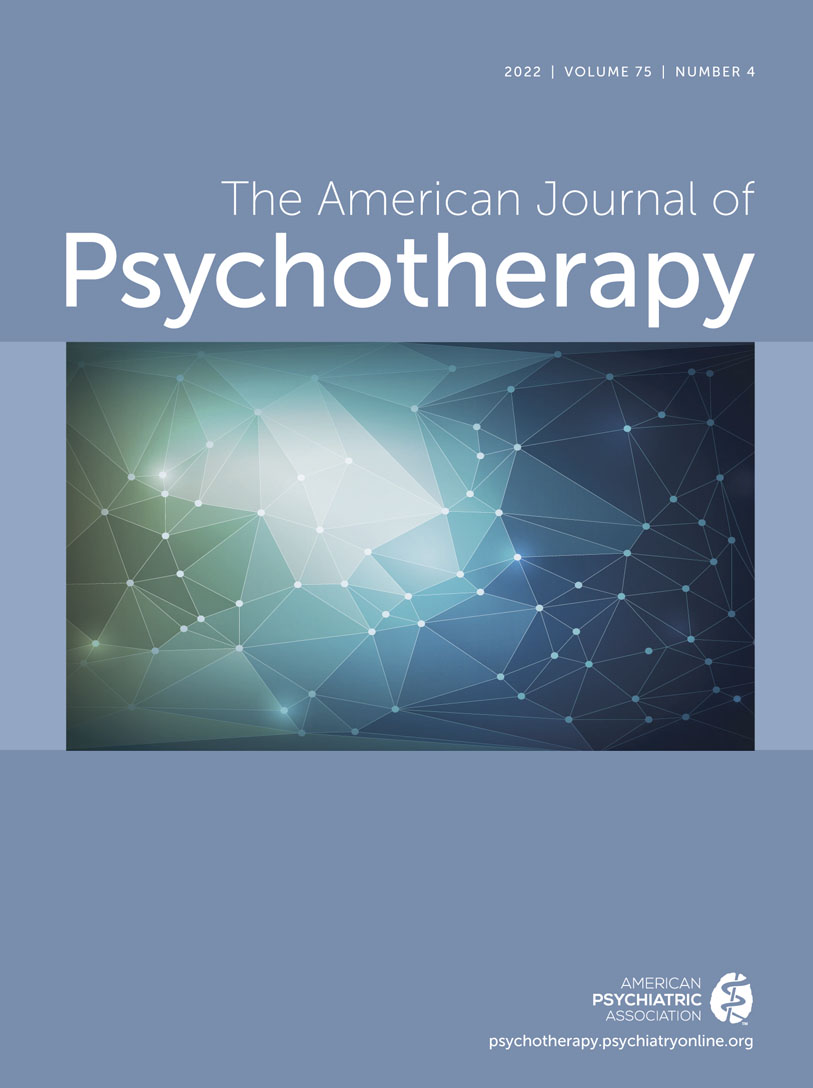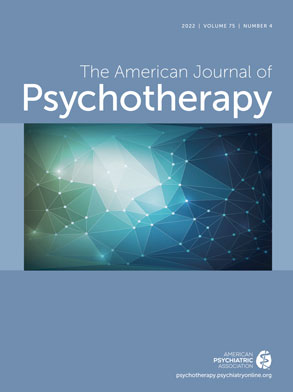Psychotherapy is an important component of treatment for patients with psychiatric conditions. Furthermore, learning to use psychotherapeutic techniques to conduct patient interviews can improve rapport, promote empathy, and increase effective communication (
1,
2). From our point of view as medical students, U.S. psychotherapy education is inadequate and is an area that needs improvement in medical schools nationwide.
Clinical skills curricula for undergraduate medical education outlined by the Association of American Medical Colleges (AAMC) include communication skill competencies delivered through longitudinal, learner- and relationship-centered training. According to these guidelines, medical students should achieve a minimum proficiency in communication skills before beginning clinical clerkships. Students should then advance and continuously refine these skills throughout their clinical experiences (
3). A frequently cited and well-regarded approach to the medical interview, the Four Habits Model (
4), places demonstration of empathy at the core of efficacious communication skills. However, most complaints and lawsuits against physicians cite poor communication as a main cause (
1), and studies (
1,
2,
5) have suggested a decline in empathy as clinical training progresses. Teaching psychotherapeutic skills represents a possible solution.
As medical students, our psychiatric education mostly covers diagnostic criteria, pharmacotherapy indications, and mechanisms of action. Information on psychotherapeutic modalities, however, is limited; even basic definitions of different psychotherapy techniques are often not well understood by students. However, the Association of Directors of Medical Student Education in Psychiatry advocates for a basic understanding of psychotherapy, including an ability to “recommend specific psychotherapy for designated patients” (
6), to be a fundamental goal of medical students. This inconsistency is commonly attributed to the limited duration of psychiatry rotations and limited faculty expertise in multiple psychotherapeutic modalities (
7). Meanwhile, in the United Kingdom, at the University College London School of Medicine, psychodynamic therapy teaching methods have been shown to be effective in increasing students’ knowledge of the doctor-patient relationship and in promoting student recruitment into psychiatry (
1). Furthermore, at the University Medical Center Hamburg-Eppendorf in Germany, the early implementation of a new communication training program (
2) has been shown to be particularly useful in enabling students to achieve specialized competence in communication skills.
Educating physicians about evidence-supported psychotherapy treatments can contribute to patients learning about, seeking, and receiving psychotherapy when indicated. Most patients with common mental disorders, such as depression, are treated by general practitioners rather than by psychiatrists, and most of these patients prefer psychotherapy over pharmacotherapy (
8). Furthermore, the World Health Organization (
9) has recognized a multitude of psychotherapeutic modalities as being effective in treating common mental disorders and has recommended the utilization of cognitive-behavioral and interpersonal therapies, among other interventions. A meta-analysis (
8) has demonstrated no significant differences in efficacy between psychotherapy and pharmacotherapy, and evidence suggests that combined treatment is likely better than either modality alone. Likewise, a systematic review of neuroimaging studies (
10) has shown preliminary evidence that, with some but not all psychiatric disorders, patients receiving psychotherapy manifest functional brain changes associated with the progress and outcome of psychotherapy that are comparable to those associated with medication use. Depending on the disorder under investigation, psychotherapy was shown (
10) to result in normalization of abnormal patterns of brain activity, recruitment of additional areas of the brain that did not show altered activation prior to treatment, or a combination of these two findings.
Educational Materials
Recognizing a lack of published curricula, faculty from esteemed teaching institutions united to implement “An Introduction to Psychotherapy for Medical Students” (
7). This course was integrated into core psychiatry rotations for third- and fourth-year medical students at the University of Minnesota Medical School. The course’s educational objectives encompassed recognition of the evidence base supporting the use of psychotherapy as a psychiatric treatment modality, confidence in identifying appropriate psychotherapies for patients, and self-assurance in referring patients for psychotherapy when indicated. The course’s goal was for participants to be able to describe specific approaches used in each of four psychotherapy modalities: supportive, psychodynamic, cognitive-behavioral, and dialectical behavior.
The curriculum was divided into four sessions, each featuring a lecture designed to impart introductory knowledge on each specific psychotherapy and a review and discussion of a video recording exhibiting approaches that may be used in that modality of psychotherapy. This arrangement permitted students to compare the different modalities through video demonstrations of each type of psychotherapy with the same simulated patient.
Comparison of pre- and postcourse evaluations indicated substantial improvement in students’ self-assurance in referring a patient for an appropriate type of psychotherapy and in objective knowledge of psychotherapy. Subsequently, the course was published online in the AAMC’s MedEdPORTAL (
7), with detailed instructor guides, video examples, helpful notes, and references.
As three medical students interested in psychiatry, with varying levels of prior exposure to psychotherapy, we sought to augment our education by taking this publicly available course. We pondered our medical experiences thus far, namely, our preparedness to effectively empathize and communicate with patients who have psychiatric disorders. Below are our reflections on takeaways, new perspectives, and discoveries—including potential applications of lessons learned.
Medical Student Reflections
Early in medical school, we were instructed to use active listening and to display empathy. However, we often found these instructions to be difficult to implement in clinical psychiatric practice. After scrambling to understand and respond to patients who had emotionally distressing experiences and complex psychiatric needs, we realized that we were underprepared to offer them effective care.
The psychotherapy course available on the AAMC website brought supportive, psychodynamic, cognitive-behavioral, and dialectical behavior approaches to life, clearly explaining and demonstrating each technique. We also learned that effect sizes for these modalities are up to triple those for pharmacotherapy (
7,
8). Prior to this point in our education, there had been no mention of psychotherapy’s remarkable capacity to improve patient functioning and quality of life. In fact, some preceptors had taught us that psychotherapy was not evidence based and had disparaged psychotherapy’s value as a useful tool in psychiatric care.
Students at the University of Minnesota Medical School identified the inclusion of video content demonstrating concepts as a particular strength of the course (
7), and we felt that the video demonstrations were particularly effective in teaching the nuanced communication skills integral to psychotherapy. The Four Habits Model (
4), a revered compendium of essential medical interview tips, describes many similar concepts in detail, but through brief, written examples that are geared toward experienced clinicians. Initially, this model may not be practical for medical students, especially prior to their clinical experiences. An effective alternative to prerecorded video examples has been used at the communication training program at the University Medical Center Hamburg-Eppendorf (
2), during which participants role-play with peers and simulated patients, consequently improving their communication skills.
Had we learned them earlier, psychotherapeutic skills might have not only helped us become better clinicians during clerkship rotations but also bolstered confidence in our professional identity and strengthened our interest in psychiatry as a specialty. After completing the publicly available AAMC psychotherapy course, we all felt better prepared to manage emotionally challenging interactions with patients. For example, one of us applied psychotherapeutic techniques, as learned from the course’s video examples, to provide basic support to a patient with trauma. This kind of helpful support was something we had not previously thought ourselves capable of as third-year medical students. Satisfied with our honed ability to channel empathy and our newfound confidence in navigating difficult interactions—which allowed us to better provide care for our more vulnerable patients—we believed that more students would have felt drawn to psychiatry had they been given the tools to approach their psychiatric encounters with poise rather than with shock.
During our journey to understand psychotherapy, we found a recurring theme: the process of unlearning. For some of us, this meant unlearning aspects of our cultural upbringing in communities where mental health is a taboo topic. Taking the course helped us to deconstruct internalized prejudices toward therapy and to understand how and why therapy is effective. Additionally, some of us unlearned the defensive lure of medical action. The course highlighted the nondirective aspect of psychotherapy that invites physicians to step back and engage simply through listening. Although it was daunting to use an approach to patient care so radically distinct from what we had been taught, internalizing successful interview examples from the AAMC psychotherapy course eased our apprehensions.
Limitations
The course’s modules point to impediments to teaching psychotherapy to medical students. In large part, medical school provides ample opportunities for observation in order to acquaint students with common medical procedures. Psychotherapy is unique in that its effectiveness may be confounded by an observer’s presence, thus limiting possibilities for observation. In the absence of patients being available during instruction, there is only so much one can learn about facilitating deep connections with patients. The best way to learn psychotherapeutic techniques, as with other clinical skills, is through clinically supervised practice. Although the AAMC course provides a plethora of discussion and reflection materials, there is no opportunity to truly use what has been learned.
At the University of Minnesota Medical School, participants indicated they were highly satisfied with the psychotherapy course (
7), were more confident in referring a patient for an appropriate type of psychotherapy, and had significantly improved objective knowledge of psychotherapy. However, performing a randomized controlled trial similar to that of the University College London study, or at least incorporating data that are more objective than those obtained through a self-assessment questionnaire (such as the University Medical Center Hamburg-Eppendorf study, in which standardized expert ratings of simulated patient encounters were analyzed in addition to participant self-assessments), would improve the evidence demonstrating the efficacy of the course (
1,
2).
Furthermore, the time constraints of a 4-hour course often meant that the interview examples seemed unresolved or intermittent. Additionally, because it is apparent that the therapists and patients in the videos are acting in order to simulate different types of psychotherapy sessions, the student may feel disillusioned and wonder about the realism of these portrayals.
Nevertheless, we came out of this course feeling heartened by a new and exciting skill set, even though we merely completed four introductory-level modules about the methodology and practicality of different modes of psychotherapy. The experience highlighted our unmet learning needs and lack of opportunities.
Conclusions
Evidence (
1,
2) highlights the need for medical students to become skilled in empathic therapeutic communication. Psychotherapy models offer effective clinical approaches to achieve this competency; however, there is minimal exposure to instruction in evidence-supported psychotherapy methods in U.S. undergraduate medical education curricula. On the basis of our experiences, we believe that including psychotherapy education in medical school curricula has potential to improve therapeutic communication and empathy skills, regardless of physicians’ desired specialty, and to increase interest in the field of psychiatry.

